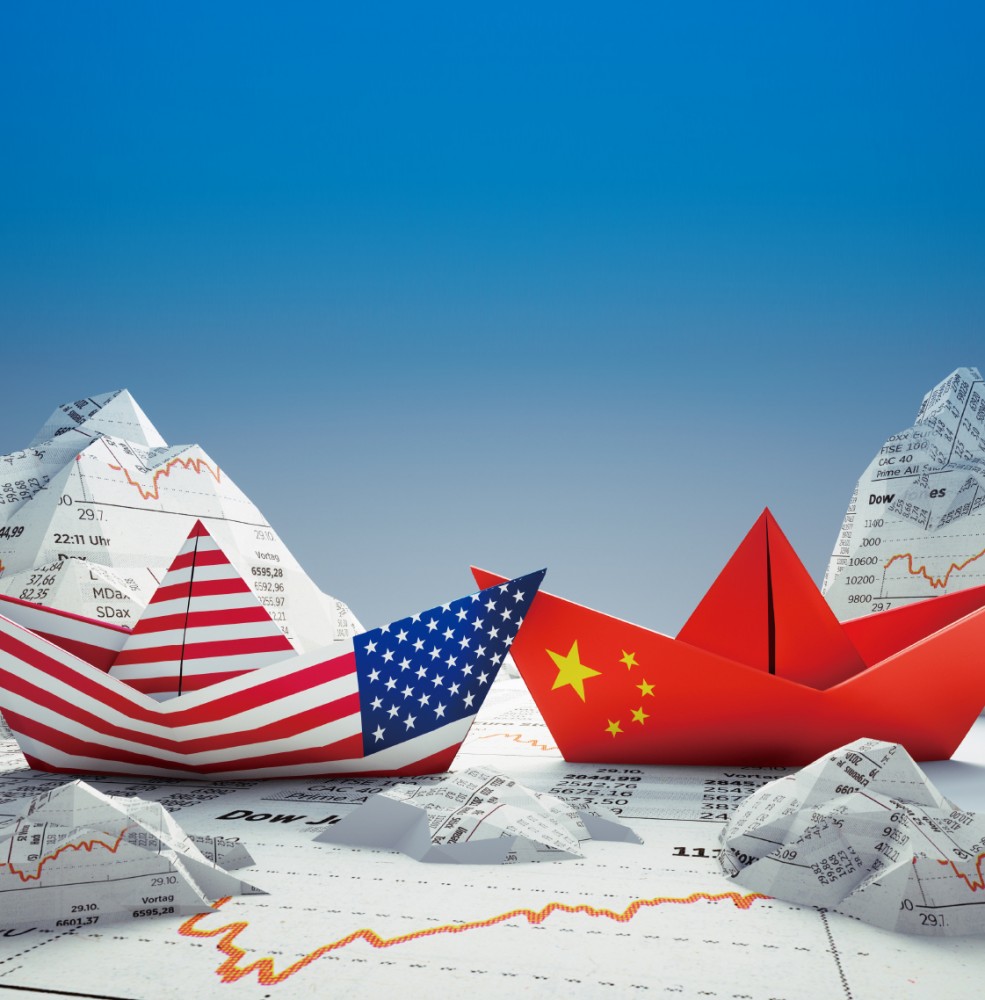There has been a suspension of hostilities in the years-old trade negotiations between China and the US, with US President Donald Trump and Vice Premier Liu He signing the first phase of an agreement between the two countries. Does this represent a thaw in relations between the world’s two largest economies for the moment? Or is it too early to make such a claim?

Anthony Neoh: It is Clear that the US-China Trade War will Continue
 At the start of this year, the US and China finally reached a Phase One Trade Agreement, resulting in a slight relaxation in the ongoing tensions. The markets also anticipate that the two nations will be able to reach an understanding during the Phase Two negotiations, and may even be able to resolve their differences. However, Anthony Neoh, Chairman of the Asian Academy of International Law, believes that the US-China Trade War is unlikely to end in the foreseeable future.
At the start of this year, the US and China finally reached a Phase One Trade Agreement, resulting in a slight relaxation in the ongoing tensions. The markets also anticipate that the two nations will be able to reach an understanding during the Phase Two negotiations, and may even be able to resolve their differences. However, Anthony Neoh, Chairman of the Asian Academy of International Law, believes that the US-China Trade War is unlikely to end in the foreseeable future.
China’s economic innovation has touched a nerve in the US and Europe
Neoh believes that the eruption of the US-China Trade War in 2018 can be traced back to changes in China’s economic structure. He explained that China’s economic development was once directed by the national government, in stark contrast to the free market economy of the US. When China joined the World Trade Organization (WTO) in 2001, it was committed to a number of market reform policies and began to change the structure of its economy.
The US and many European nations initially welcomed China’s steps towards globalization. However, by 2012, China’s economic development was gradually moving towards policies to create an innovation economy and build a moderately prosperous society, and this touched a nerve with societies in the US and Europe.
The US is guarding against any threat to its leading position
Neoh explained that the “Made in China 2025” programme launched in 2015 is critical to China’s implementation of its manufacturing power strategy. He believes that China’s economic transition has spurred on its rapid rise over recent years, while Xi Jinping’s has heavily promoted the creation of a moderately prosperous society, with the goal of preventing China falling into the “middle income trap” and enabling it to move towards becoming a developed country.
Since the election of Donald Trump as US president in 2017, there has clearly been a sense that China has begun to shake the US’s global economic dominance. Moreover, in terms military matters, China’s deployment in the Spratly Islands also represents a threat to the position of the US military in Southeast Asia. It is for these reasons that Trump initiated a trade war with China.
China has built strong alliances to counter the US
Two years after the Trade War first erupted, the US and China have finally reached the first phase of an agreement. “Although China is gradually developing into an economic model driven by domestic consumption, it still depends on imports for some products.” Neoh also noted that the US also needs Chinese capital, and that China still holds a huge amount of the US’s national debt. It is therefore fair to say that the two sides are inextricably connected, and these connections are largely responsible for the protracted dispute between the US and China.
On one hand, China is engaged in a tug of war with the US, while on the other hand, it is proactively gaining more bargaining chips in an effort to counter the US. Neoh commented that China’s active pursuit of international economic cooperation in recent years, via the “Belt & Road Initiative”, has expanded its network of international relationships and courted a strong set of alliances with which to counter Western nations. China has also actively purchased agricultural goods, oil and other products from countries including Brazil and Russia, with the goal of reducing dependence on the US.
Negotiations are unlikely to deliver substantial results any time soon
Neoh predicts that it will be even more difficult to reach a consensus during the second phase of the negotiations than it was in the first, and it could well be that the two sides’ positions can never be reconciled. The most that can be hoped for from future negotiations between the US and China is that an equilibrium is reached. The US will hold a presidential election in November, and Trump’s chances of re-election are high. However, even if the eventual Democratic candidate prevails, there will be no significant shifts in the overall state of play between the US and China. Neoh said frankly that, barring the occurrence of some unexpected major events that the two sides have to resolve together, the US-China Trade War is unlikely to truly end in the next 50 years.

Tang Hei-wai: The US-China Trade War will Become a Pawn in Trump’s Campaign for Re-election
 The signing of the China-US Phase One Trade Agreement led to hopes that the agreement will result in major changes in the global economy. However, all that has happened so far is that the US has halted rises in import taxes for Chinese goods, while China has bought large quantities of American soybeans, other agricultural products, and energy products. So, is it just for these after two years of difficult negotiation?
The signing of the China-US Phase One Trade Agreement led to hopes that the agreement will result in major changes in the global economy. However, all that has happened so far is that the US has halted rises in import taxes for Chinese goods, while China has bought large quantities of American soybeans, other agricultural products, and energy products. So, is it just for these after two years of difficult negotiation?
The effects of the first round of agreements are limited
Tang Hei-wai, Professor of Economics in the Faculty of Business and Economics at the University of Hong Kong, believes that the first round of agreements will have limited effect. He noted that the Phase One Agreement is by no means a major agreement, and there has been no major progress between the two sides that would have an impact on their economies. From a macroeconomic perspective, China is the world’s second-largest trading nation, while most US products depend on imports as well as local manufacturing, so the Sino-US trade disputes will not have much effect on the US economy and GDP.
In terms of trade agreements, the areas under negotiation include opening up the financial services sector, but the biggest sticking point is the US demand that China is committed to reducing pressure on foreign companies investing in China, for example by strengthening intellectual property protections and ending the practice of forced technology transfers, so that it is no longer necessary for companies to “exchange technology for markets”.
Will China’s competitiveness in high-end industries be held back by this? Tang believes that China is no longer in the position it was a decade or more ago in terms of technology, and has its own industry giants, some of which are even global leaders in certain sectors, such as 5G. He is more concerned about the US government’s unilateral sanctions against certain companies, most notably Huawei.
Delivering a Phase Two Agreement is a vote winner for Trump
 The first-round trade agreement between China and the US represents the first time in the history of diplomacy between the two nations that an agreement was signed by officials of non-equivalent status. National leaders do not generally attend signing ceremonies for trade agreements, especially when the official representing the other side is not of equivalent status. So what was behind Trump’s decision to do so? Tang candidly explained that, “It’s quite simple; he wants to be re-elected.”
The first-round trade agreement between China and the US represents the first time in the history of diplomacy between the two nations that an agreement was signed by officials of non-equivalent status. National leaders do not generally attend signing ceremonies for trade agreements, especially when the official representing the other side is not of equivalent status. So what was behind Trump’s decision to do so? Tang candidly explained that, “It’s quite simple; he wants to be re-elected.”
He believes that the agreement will have little actual effect on the economic relationship between the US and China as a whole, but Trump wants to use it to tell voters that, after two long years, the US has finally reached an understanding with China. And as long as people vote for him, the country can continue with Phase Two of the agreement.
However, according to Tang, the reality is that the US-China trade agreement is of merely symbolic significance. It is important to understand that the motivations behind the US-China Trade War have little to do with trade itself, and are more about the US striving for fair treatment, at the same time making China adopt structural reforms. The US has demanded that China make economic reforms that reduce official interventions and allow the mechanisms of the free market to decide.
Trump has a good chance of being re-elected
The US election will take place towards the end of this year, and Tang believes that Trump is highly likely to be re-elected. First, the opposition are in a relatively weak position for the time being, and second, the economy and stock market have been thriving over the last few years, particularly in 2016.
When will a Phase Two Agreement emerge? Tang predicts that Trump will launch an agreement shortly before the election, but the content is unlikely to be any better than that of previous agreements, and will probably be similarly lacking in actual progress.
Constraining China remains the main policy direction
When Bill Clinton was president, he believed that China would become closer to the US as its level of economic development improved. However, the reality is that there will not necessarily be changes in China’s political position.
Tang commented that, given the political environment and atmosphere at the present time, there is no chance that a US president will be closer to China, and constraining China’s economy and political strategy will remain the overall direction for the US. Over the next few years, the focus may switch from a trade war to a technology war, which could split or reduce academic exchanges between the two countries.




